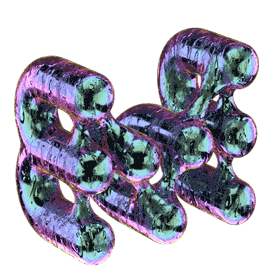

























Crusted Core
Opening: 26/9 6PM
Open: 25–28/9, 10AM–6PM
Part of PRAGUE ART WEEK 25
Sweat tickled behind our ears and salt stung the creases of our eyelids, our hair sticking to our red necks. We climbed uphill in the mountainous Italian countryside, dazed by the heat that burned our skin. During our journey, we witnessed many liberating moments, leaving our bodies, some of them seeming bizarre. The rusting hull of the gutted car could not withstand the relentless heat and tossed away its upholstery and engine heart. All that remained of the powerful machine was a skeleton, an unusable shell, turned into an unintentional sculptural intervention in the wild landscape. The bitter lifelessness of the burnt-out shell intertwined with the lush nature and its unstoppable movement, as we caught a glimpse of the agile body of a yellowish lizard making its way through the rocks. In the shimmering hot air, we could easily have overlooked the fleeting trace it left behind—a delicate transparent veil of its own skin, which it had shed.
Crusted Core explores the symbol of shells—organic and technological—not only as a surface or protective covering, but as a dynamic interface, a place of transformation, vulnerability, and encoded memory. Through this lens, we explore how materials cover and contain processes that are often invisible: growth, decay, transfer, and repair. From biological exoskeletons to artificial shells, from digital covers to accumulated mineral layers.
Human interventions clash with spontaneous processes. Crusted Core balances the intrinsically human with the extraterrestrial. Tangible fingerprints patter across prefabricated materials, biological structures with technological threads. Envelopes and shells become independent cores, carriers of genetic information and codes. Mona Schulzek inserts volcanic and fossil objects into metal structures that encircle them like time rings, connecting the ancient history preceding the Earth itself with an uncertain future. Meteorites and other fragments, which often contributed to the formation of our planetary system, intermingle with objects of cosmic debris—satellites and fragments left to the mercy of endless motion in space. They become dead shells without content, condensed cores anchored in carriers, stripped of their own temporality. In a similar but aesthetically different way, Ivy Chilelli anchors natural objects and their imitations in portals, translucent interfaces of suspended growth. The assemblage-like arrangements transform into crusts around emerging organisms, which appear as biological-synthetic matter of unclear origin. The insides of these hybrids spill outwards, as if they wanted to engulf or transform it. In his work Vesmír (Universe), Peter Nižňanský continues the tradition of modernist sculpture while shifting to a geopoetic stratum. The content of the object becomes empty cavity—an imprint of former completeness, which today exists more as a trace as collective memory cracks. It is precisely this emptiness that becomes an active space, shiny and attractive, appearing as a moment of duration and the possibility of transformation. In her work, Ljuba Šlechtová addresses the processes taking place beneath the surface of packaging or behind doors, which we glimpse through the illuminating space of a keyhole—moments of transition between what we can control and what escapes our power. Something is constantly changing here, soon to begin developing and transforming, and we can only watch; at the same time, the mechanization of movements has led us to feel that we are gradually losing control.
Similarly, we cannot stop the change in the state of the inner matter of a perfectly shaped egg, when the integrity of its shell may crack in a hot bath.



